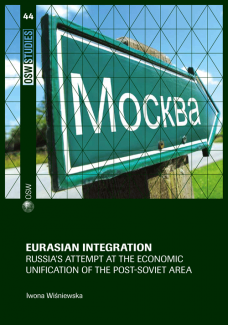Eurasian integration. Russia's attempt at the economic unification of the Post-Soviet area.

In 2009, Vladimir Putin, the then Russian prime minister, gave impetus to the establishment of closer relations within what was then a still narrow group of three countries: Russia, Kazakhstan and Belarus. Russia was determined in embarking on the implementation of the principles of the Customs Union among these three states and, since 2012, within the Common Economic Space as well. This process of integration is intended to bring about the introduction of ‘four freedoms’ in this area: the free movement of goods, services, capital and labour. From Moscow’s point of view, building up such integration structures is especially necessary in order to counteract the economic expansion of the European Union and China. It also feels it is important to take measures against the loosening of the bonds between the CIS countries and Russia. At the same time, close co-operation is expected to guarantee for Russia that the strong politico-economic influences in this area will be maintained. Despite the numerous limitations of the integration process, such as the small number of the participating states or limited progress in implementing the CES, this is still the most advanced integration programme in the region seen since the collapse of the USSR. Progress in putting the rules of the Customs Union into practice can be seen as a success for Moscow. In turn, the formation of the CES is still at an early stage, and it is difficult to determine at this point to what extent the three countries will harmonise their markets.

